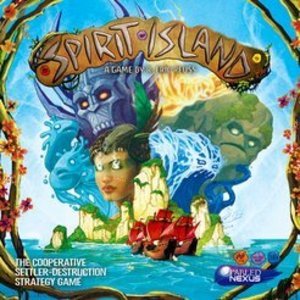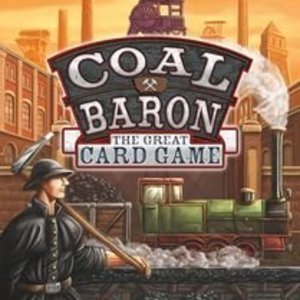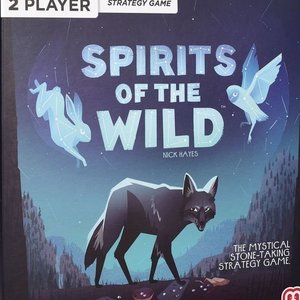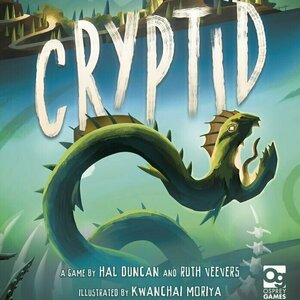
ANZ SARATHI
Navigation and Business
App
This app puts your security in YOUR hands. It is about being "Secure @ Source". Know the details...

Goong - Dẫn đường, thông tin giao thông chính xác
Navigation and Travel
App
Goong is not only a smart application for exact direction but also aims to create a community for...

Anime Studio Story
Games and Entertainment
App
Produce your own hit anime starring a character of your making! Select a face, body, and presto!...

Crisis at Steamfall
Tabletop Game
Steamfall is a dynamic adventure game set in an original fantasy world with sci-fi flair. Master...
Boardgames 2018Games

Spirit Island
Tabletop Game
Powerful spirits have existed on this isolated Island for time immemorial. They are both part of the...

Coal Baron: The Great Card Game
Tabletop Game
The city of Essen, Germany at the turn of the 20th century was a center for coal mining in Europe....
BoardGames CardGames

The Walking Dead: No Sanctuary
Tabletop Game
THE WALKING DEAD: NO SANCTUARY—designed by the award-winning team of Adam and Brady Sadler—is...

Spirits of the Wild
Tabletop Game
Spirits of the Wild is a stone-taking game for two players. The object of the game is to earn the...
Tippy Toes and Tappy Heels
Book
Join Tippy and Tappy on an Exciting Adventure! Follow Tippy and Tappy clickety-clack their way...
Purple Phoenix Games (2266 KP) rated Cryptid in Tabletop Games
Jul 1, 2020
Upon setup, each player, up to a max of 4, will take a hints booklet and tokens of any of the 4 colors. The booklets provide each player with one, and only one, hint as to where the “Cryptid” could be hiding on the game board. The game board has 4 different terrain types, and a few landmark spots such as bear dens, towers, and cougar hideouts, where the monster could be hiding. Once each player has read their clue, they will go around the table a total of 2 times placing small cubes in places where the “Cryptid” is not. This serves two purposes, to assist the game from taking more than the time necessary to have fun, and to allow the players a little early game strategy to throw other players off the scent.
From this point forward, it is up to the players to start deducing what clues they think the other players have. A list of all possible clue types can be found in each booklet to give the players an idea of what to be considering. This also assists the game experience from taking too long. Players will now have 2 options on their turn. They can ask for information from any other player, or they can take a guess as to where they think the “Cryptid” might be. There is NO penalty for guessing the correct answer, but in doing so, if you are incorrect, you are identifying a space to the other players of where your clue may indicate where the “Cryptid” could be located. So guess carefully! As you venture forth to ask clues of other players, they will place either a cube on the space you inquired about, indicating the “Cryptid” could not be in that spot based on their clue, or they will place a disk, indicating that the space could be the space as to where the monster could be hiding. As the board begins to fill with cubes and disks, you will begin to triangulate (just a fun word I LOVE using) where you think the monster may be hiding. When you feel like you’ve got it, then take a guess. If all other players place a disk on the spot you have guessed, then you have located the “Cryptid”!
What I love about this game is its simplicity, but immersion. The game does a great job of creating that on-the-edge-of-your-seat feeling that you are about to get another clue. As I mentioned above, the designers have included some very non-intrusive, but key elements, into the game that prevent it from becoming a waiting game while other players who may be stuck trying to over-analyze the clues and accidentally hijack the time. From the simplistic clues, to the initial cube setting, the game board will fill with clues fairly quick, giving you the opportunity to make some key guesses early on.
It’s this fast paced organization of “Cryptid” that allows for multiple plays, and hopefully multiple winners. Or, if you are my 12 year old son….the winner EVERY time. Don’t ask me how he does it! My wife and I think he has special powers. We may be on to something here! Anyhow, “Cryptid” is a wonderfully whimsical game that will take you on about a 30-45 minute adventure with your friends and family. You will furiously be on the edge of your chair trying to figure out the next clue. The gameplay feels satisfying and smooth, and will leave you wanting to trek across the island again someday to find the ever illusive “Cryptid”! For these reasons, and many more, Purple Phoenix Games gives this one an illusive 19 / 24.

